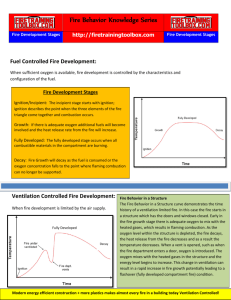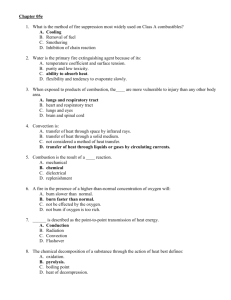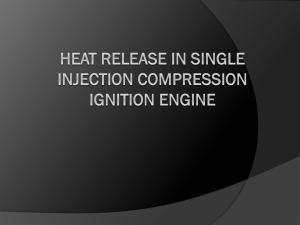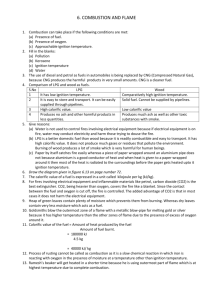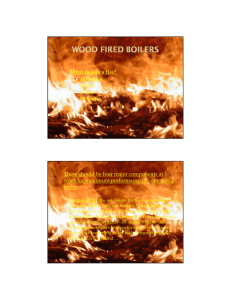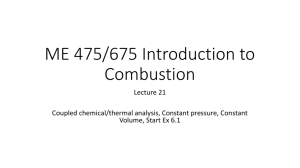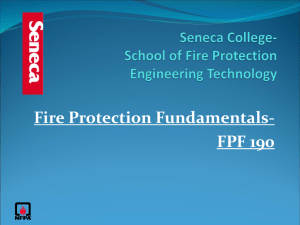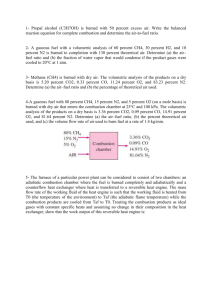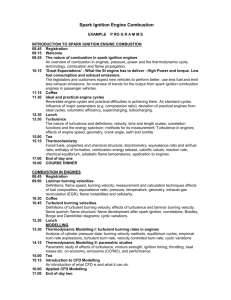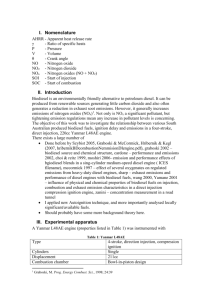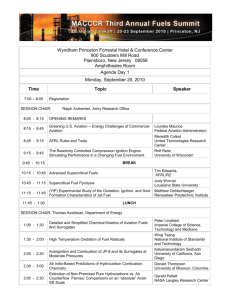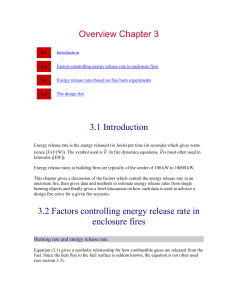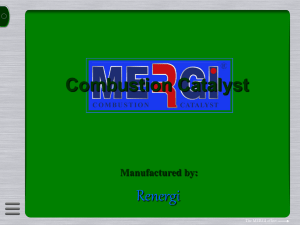simulation of ignition by discharge in the counterflow jets of oxidant
advertisement
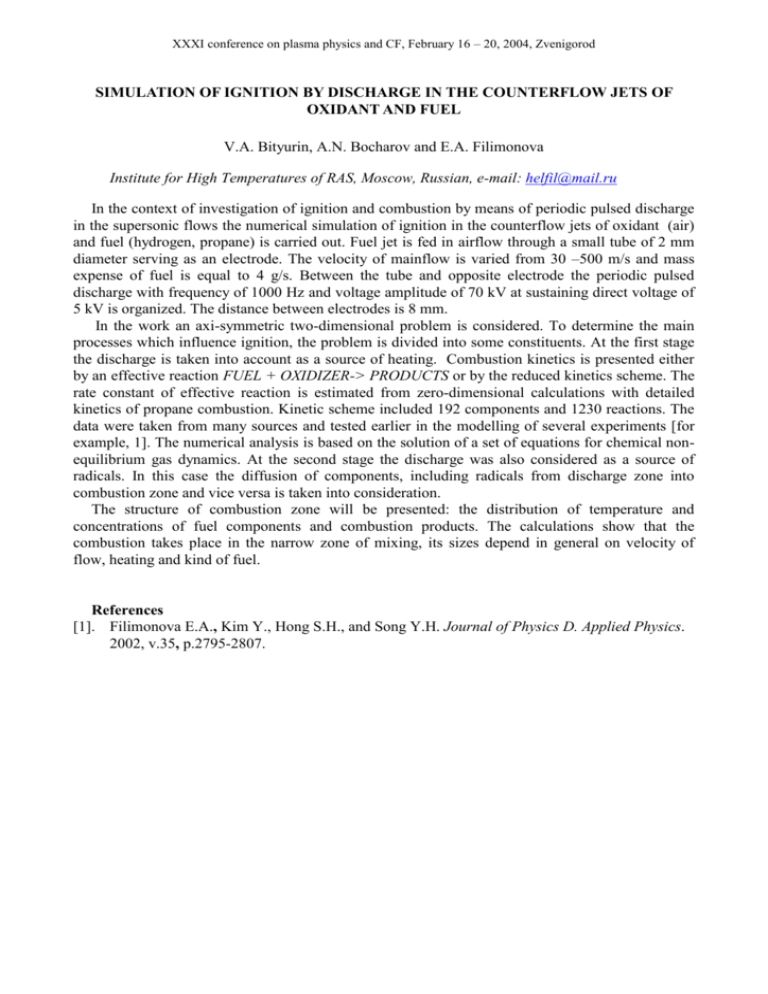
XXXI conference on plasma physics and CF, February 16 – 20, 2004, Zvenigorod SIMULATION OF IGNITION BY DISCHARGE IN THE COUNTERFLOW JETS OF OXIDANT AND FUEL V.A. Bityurin, A.N. Bocharov and E.A. Filimonova Institute for High Temperatures of RAS, Moscow, Russian, e-mail: helfil@mail.ru In the context of investigation of ignition and combustion by means of periodic pulsed discharge in the supersonic flows the numerical simulation of ignition in the counterflow jets of oxidant (air) and fuel (hydrogen, propane) is carried out. Fuel jet is fed in airflow through a small tube of 2 mm diameter serving as an electrode. The velocity of mainflow is varied from 30 –500 m/s and mass expense of fuel is equal to 4 g/s. Between the tube and opposite electrode the periodic pulsed discharge with frequency of 1000 Hz and voltage amplitude of 70 kV at sustaining direct voltage of 5 kV is organized. The distance between electrodes is 8 mm. In the work an axi-symmetric two-dimensional problem is considered. To determine the main processes which influence ignition, the problem is divided into some constituents. At the first stage the discharge is taken into account as a source of heating. Combustion kinetics is presented either by an effective reaction FUEL + OXIDIZER-> PRODUCTS or by the reduced kinetics scheme. The rate constant of effective reaction is estimated from zero-dimensional calculations with detailed kinetics of propane combustion. Kinetic scheme included 192 components and 1230 reactions. The data were taken from many sources and tested earlier in the modelling of several experiments [for example, 1]. The numerical analysis is based on the solution of a set of equations for chemical nonequilibrium gas dynamics. At the second stage the discharge was also considered as a source of radicals. In this case the diffusion of components, including radicals from discharge zone into combustion zone and vice versa is taken into consideration. The structure of combustion zone will be presented: the distribution of temperature and concentrations of fuel components and combustion products. The calculations show that the combustion takes place in the narrow zone of mixing, its sizes depend in general on velocity of flow, heating and kind of fuel. References [1]. Filimonova E.A., Kim Y., Hong S.H., and Song Y.H. Journal of Physics D. Applied Physics. 2002, v.35, p.2795-2807.
